Living Machine Virtual Tour
Anaerobic Reactor
Two 1,500 gallon cement tanks buried below the ground surface on the east side of the building are the point of entry to the Living Machine. Water flushed down the toilet or released into sinks in the AJLC drains by gravity to the first anaerobic tank (AN1) where the breakdown of wastewater begins.
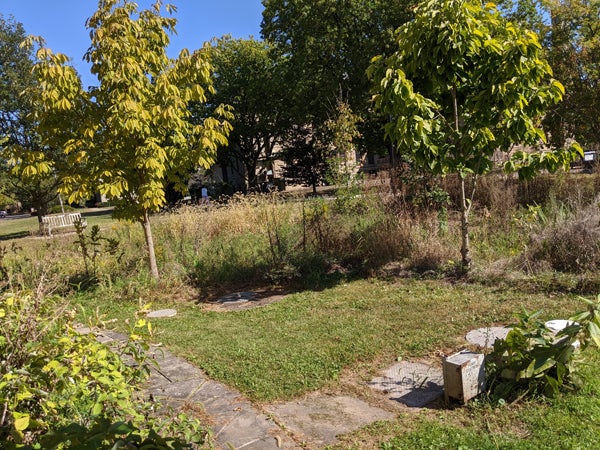
and the 3000 gallon anaerobic tank
- Solids settle, and the liquid portion of the waste travels by gravity from tank AN1 to AN2.
- Anaerobic bacteria, microbes which live in environments without oxygen, convert organic wastes into ammonia, methane, and organic acids.
- The amount of organic carbon in the water (measured as Biological Oxygen Demand – BOD), is reduced by 50% before water leaves the tank.
- Nitrogen, an important plant nutrient, arrives in an organic form and is converted to ammonium (NH4).
- Water flows by gravity from AN2 into the closed aerobic reactor tanks
| Measure | Value |
|---|---|
| Volume: | 1500 gal each |
| Typical BOD: | 120 mg/L (spring ’02 avg.) |
| Dissolved Oxygen: | <.2 mg/L (anaerobic) |
| Nutrient | Typical Levels |
|---|---|
| Ammonium | 1.34 mg/L |
| Nitrate | 10.92 mg/L |
| Phosphate | 6.25 mg/L |
Closed Aerobic Reactors
The underground Closed Aerobic tanks (CA1 and CA2) reside together but are separated by a partition. Here, dissolved oxygen concentrations are being monitored (note the blue wires at left).
Located below ground and immediately adjacent to the anaerobic tanks, the closed 1,500 gallon Aerobic tanks are distinct from the anaerobic reactor tanks in that they are vigorously aerated to provide the microbial community with oxygen.
- Aerobic bacteria, bacteria that live in the presence of oxygen, further break down the organic compounds such as sugars, complex carbohydrates, fats and proteins and release carbon dioxide, the same way our cells “burn” sugar.
- An important group of aerobic bacteria also convert nitrogen in the form of ammonium (NH4) into nitrogen in the form of nitrate (NO3). This is a critical step in removing this nutrient.
- By the time water leaves these tanks, 90% of the Biological Oxygen Demand has been removed.
- When the water level in the closed aerobic tanks reaches a maximum height, it is pumped from into the open aerobic tanks which are housed in the greenhouse structure.
| Measure | Value |
|---|---|
| Volume | 1500 gal each |
| Typical BOD | 80 mg/L (spring ’02 avg.) |
| Dissolved Oxygen | 5-10 mg/L |
| Nutrient | Typical Levels |
|---|---|
| Ammonia | 1.60 mg/L |
| Nitrate | 9.32 mg/L |
| Phosphate | 5.17 mg/L |
Open Aerobic Reactors
The Open Aerobic tanks (OA1, OA2, and OA3) harbor a diverse array of tropical plants within the greenhouse.
The three open aerobic tanks are the most visible and, certainly the most aesthetically pleasing and unique component of the Living Machine.
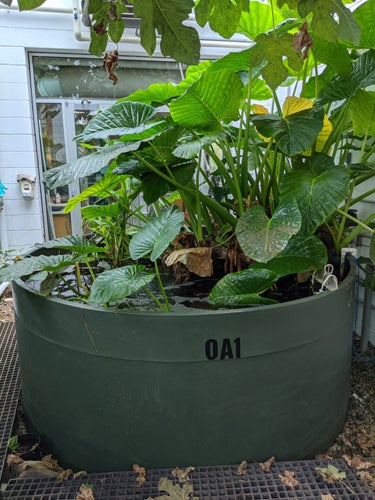
inside the Living Machine
- These three tanks are situated in the building’s greenhouse and are hydroponically planted with rafts of large tropical plants.
- As with the closed aerobic tanks, these are vigorously aerated to stimulate further microbial growth.
- The bacterial community living within these aerobic reactor tanks continue to break down the remaining organic matter and continue the process of converting ammonium nitrogen (NH4) to nitrate (NO3).
- The primary role of the plants in the tanks is to generate a dense root mat which provides habitat for the diverse community of protozoa and small invertebrates which graze on bacteria. A key objective of this component of the system is to aggregate the bacteria into “flocs”.
Clarifier
The Clarifier pumps recycle sludge to the beginning of the flow pathway (left). Goldfish that inhabit the tank serve as biological indicators of ecosystem health.
After treatment in the Open Aerobic tanks wastewater enters the Clarifier basin.
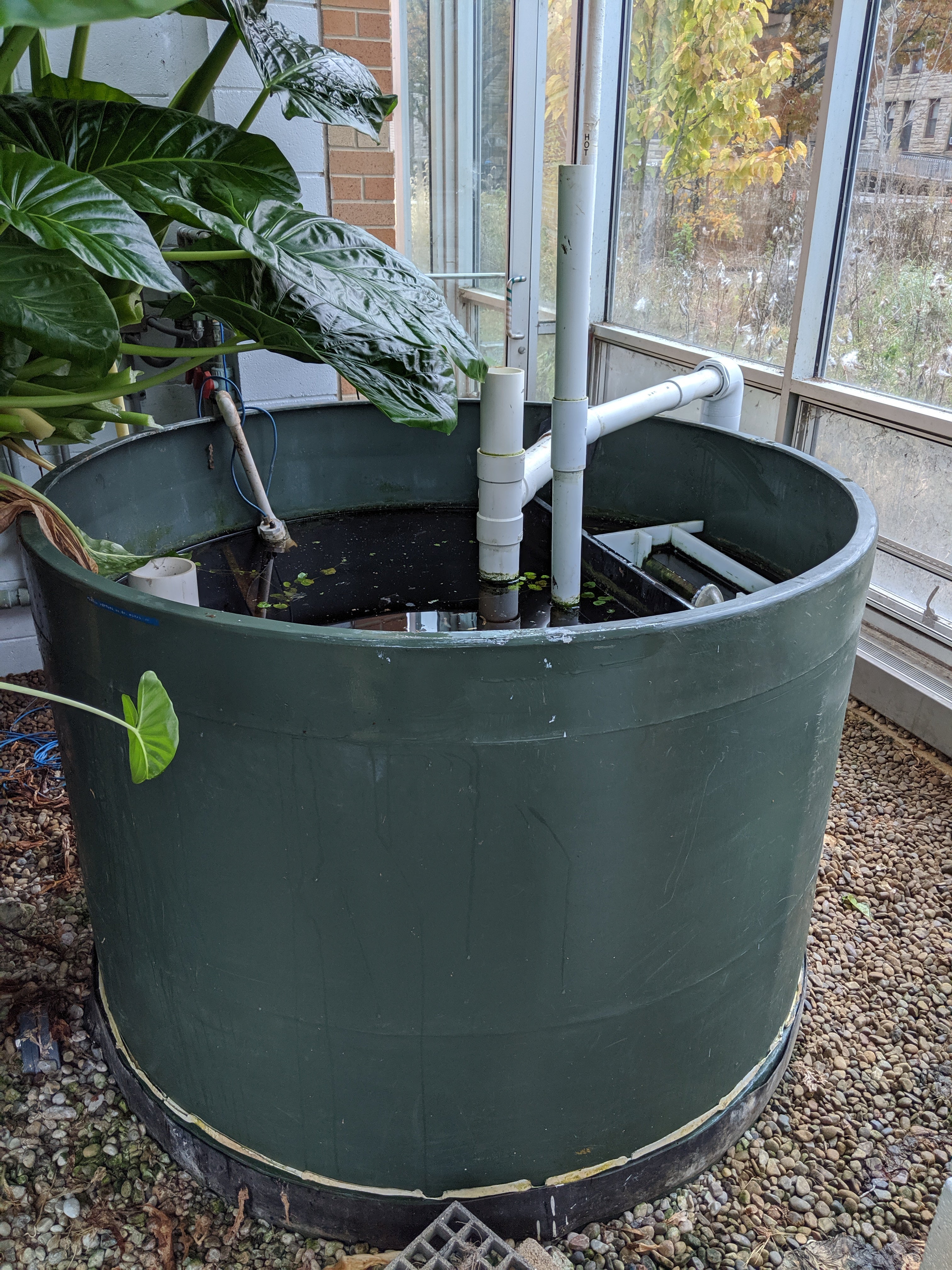
to be reclaimed.
- Calm conditions allow solids suspended in the water, including the bacterial floc, to settle and separate into clear water on top and a layer of sludge on the bottom.
- Air-lift pumps at the base of the Clarifier and on the water surface recycles sludge and surface scum back to the anaerobic tanks and the closed aerobic tanks. The recycling of this “activated sludge” is necessary in maintaining healthy bacterial populations. A baffle and spillway directs clear water coming out of the clarifier to a sump in the floor of the greenhouse.
| Measure | Value |
|---|---|
| Volume | 700 gal |
| Typical BOD | -- |
| Dissolved Oxygen | -- |
| Nutrient | Typical Levels |
|---|---|
| Ammonia | 0.18 mg/L |
| Nitrogen | 12.82 mg/L |
| Phosphorus | 5.07 mg/L |
Constructed Wetland
Clear supernatant from the Clarifier spills into the Marsh Influent sump (left). A portion of the planted gravel floor flanked by raised walkways (right).
After leaving the clarifier, wastewater enters a sump and is then distributed through perforated piping on the east side of the greenhouse. The floor of the greenhouse between the open aerobic tanks and the clarifier is a planted wetland. The wetland is actually an enclosed 3-foot deep gravel bed. Water seeps by gravity from the east end of the greenhouse to the west end where it is collected in an effluent sump.
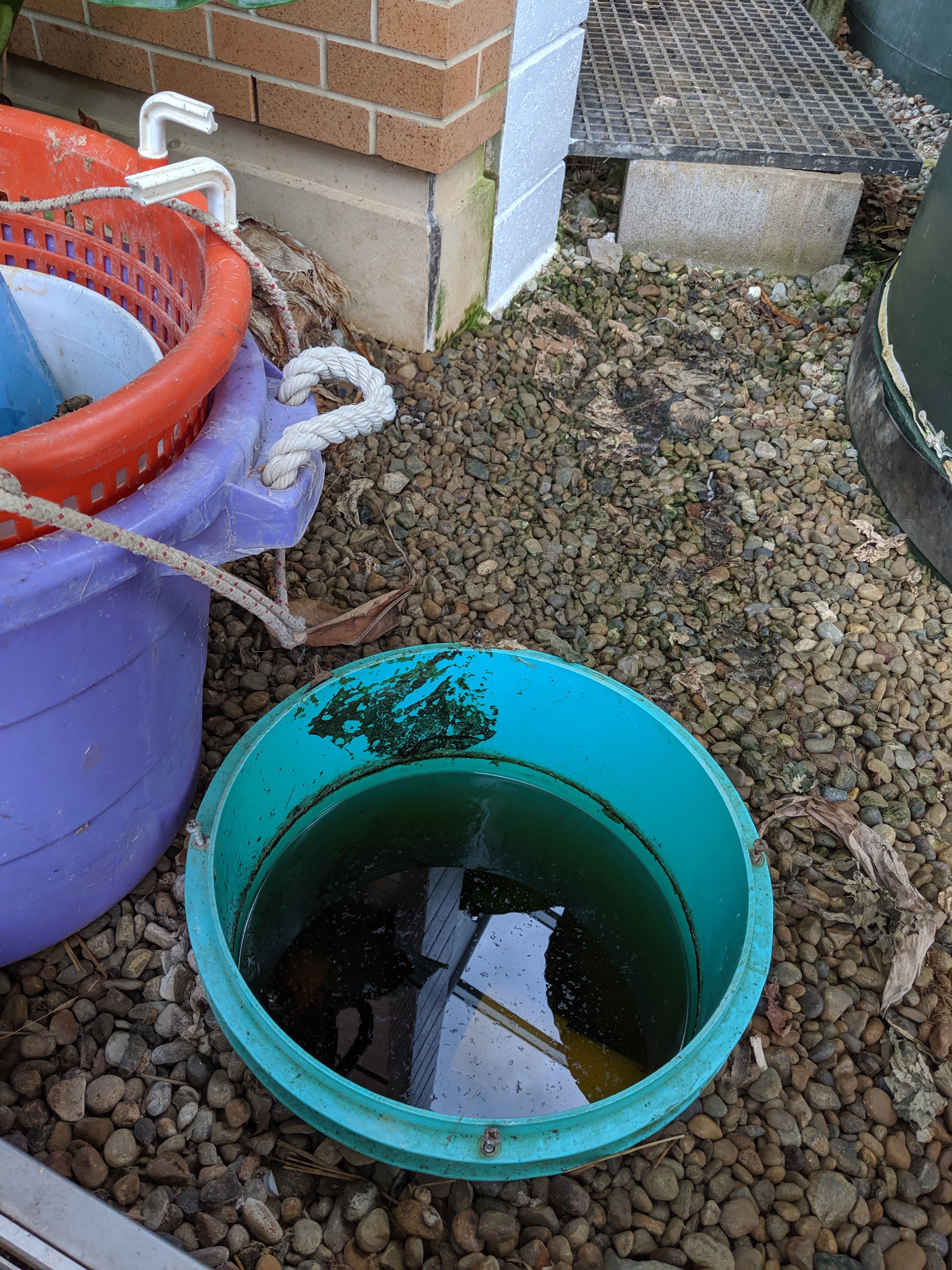
water in the constructed wetland.
- Over the years, the floor has been planted with a mix of wetland flora including tropical and local species such as Woolly Sedge, Willow, Iris and Rush.
- The roots of these plants provide habitat and a food source for bacteria that help convert nitrate (NO3) to nitrogen gas (N2) through a process called denitrification.
- In addition to nitrogen, phosphorus is an important plant nutrient that must be removed from wastewater. Phosphorous is largely removed in the marsh by physical adsorption onto the gravel.
| Measure | Value |
|---|---|
| Volume | 4500 gal |
| Dissolved Oxygen | low (anaerobic) |
| Nutrient | Typical Levels |
|---|---|
| Ammonium | 0.22 mg/L |
| Nitrate | 12.32 mg/L |
| Phosphate | 3.86 mg/L |
Storage, Disinfection, and Re-use
Water from the gravel bed enters the Effluent sump (bottom left) where it is held in a storage tank. When needed for flush water, it is sent through the UV filter (top right).
After exiting the gravel wetland the clean, treated water is collected in a pipe which leads to the 2,200 gallon Effluent Holding Tank located below ground outside, adjacent to the other closed tanks.
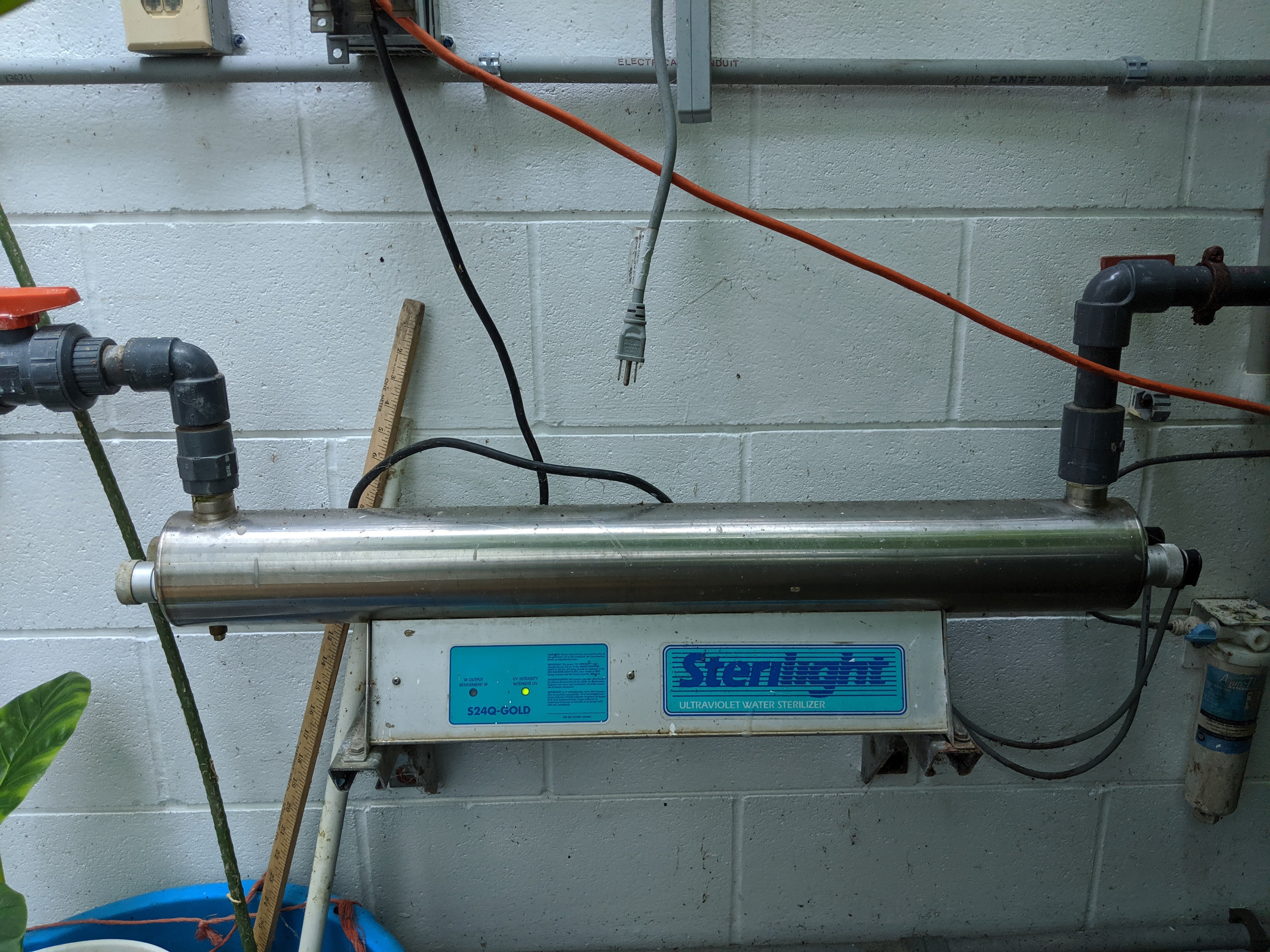
- When needed, the water is pumped through an ultraviolet disinfection unit, which uses UV light to kill any bacteria and pathogens surviving the trip through the machine. Think of it as sun burning them to death!
- A pressurized holding tank brings the Living Machine water up to city pressure and holds it for immediate reuse in the building’s toilets.
| Measure | Value |
|---|---|
| Volumes | 2500 gal (holding tank) 44 gal (boost tank) |
| Typical BOD | <5 mg/L (spring ’02 avg.) |
| Dissolved Oxygen | <2mg/L (aerobic) |
| Nutrient | Typical Levels |
|---|---|
| Nitrate | 7.03 mg/L |
| Phosphate | 2.49 mg/L |